The Macroeconomics of Native Advertising

The introduction of the Internet to US households in the early 90’s has forever changed the media landscape and how consumers discover and engage with content.
From the very first banner ad to the present day machine learning and programmatic media buys, paid media has seen many innovative iterations over these few decades.
This new media age has permanently removed the gatekeeper status of buyer-information from businesses and placed it squarely in the hands of households.
It used to be that if a consumer wanted to learn more about a brand, product or service they would have to contact the company and talk to a salesperson.
That person was the gatekeeper of the information he or she would allow the consumer to see in order to make a purchase decision.
Google’s Zero Moment of Truth (ZMOT)
In 2011, we learned from Google’s breakthrough research featured in Winning the Zero Moment of Truth that the majority of consumers spend time researching products and services on the web before they make a purchasing decision.
In fact, according to SiriusDecisions, 70% of the buyer’s journey is complete before a buyer reaches out to a salesperson.
Google’s research was done prior to 2011 when smartphone adoption was relatively mild compared to where it is today. It’s reasonable to assume that ZMOT is even more pronounced in the consumer’s psyche in 2016.
That’s today’s reality, and, for the most part, brands around the world have accepted this as the new normal and are at some stage of addressing it in their marketing departments.
Unfortunately, it’s taken them over two decades of the Internet’s existence to figure it out.
As a result, brands have traditionally viewed and prioritized online content production and its paid distribution in the following manner:
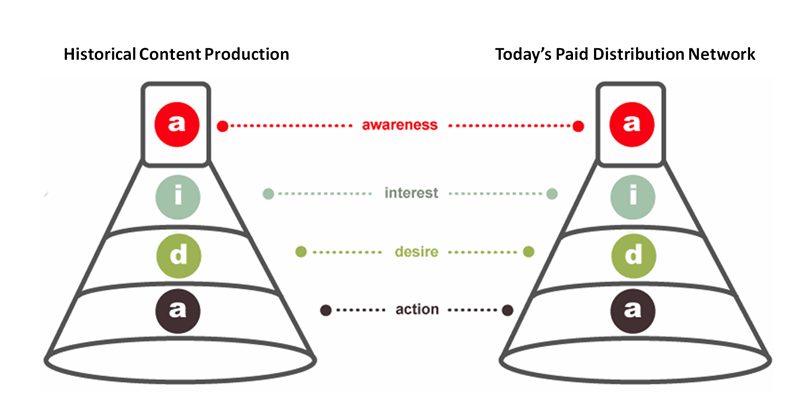
This model has a tinge of the pre-ZMOT world, where buyers were still beholden to brands for the information they sought. The difference here is, while consumers were clamoring for top-funnel content, brands prioritized the production and distribution of content towards the bottom of the buyer’s journey.
That’s the complete opposite of how the buyer’s journey typically looks, though.
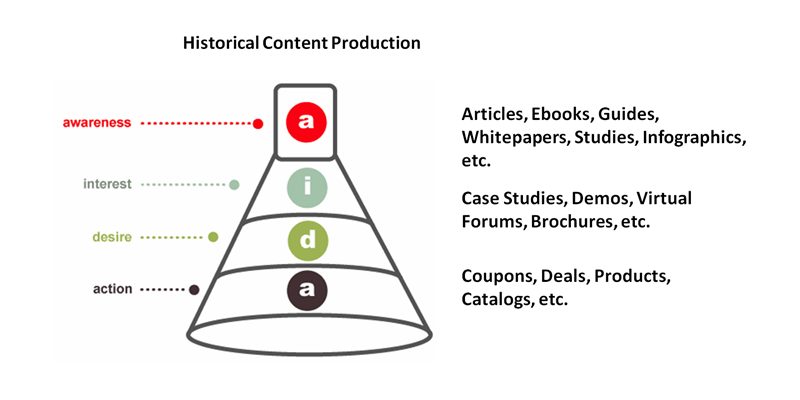 This was done when there was still a true content deficit at the top of the funnel for most industries. In other words, there were more people demanding problem-solving content than there was content to solve those problems on the Internet.
This was done when there was still a true content deficit at the top of the funnel for most industries. In other words, there were more people demanding problem-solving content than there was content to solve those problems on the Internet.
Most were only offered mid to bottom-funnel content by brands.
Fortunately, brands weren’t the only entities that could publish content on the Internet. Households, professionals, and B2B consumers began expressing their experiences and expertise at the top of the funnel based on their experiences with brands, products and services.
Proctor and Gamble’s former CEO, A.G. Lafley, called this the “Second Moment of Truth” in the forward of Mark Roberts’ book, Lovemarks.
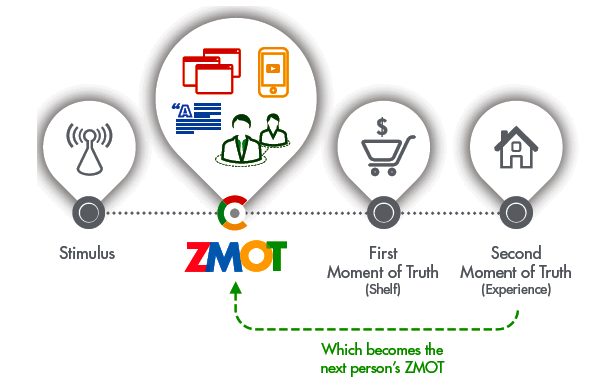
Content Marketing’s Impact
During this time, much of the web’s brand-created content was in complete disequilibrium with the actual buyer’s journey. This disequilibrium helped give rise to present-day content marketing; forcing content produced by brands to align with the buyer’s journey.
At the same time, some brands were starting to see the impact of consumer-generated top-funnel content (second moment of truth).
Consumers were telling the brands’ stories (good, bad or indifferent) and filling the ZMOT needs of other consumers due to the massive deficit of top-funnel content demanded in the buyer’s journey.
This put enormous pressure on some brands to do something about it – to steer the story that was being told anyway.
It was around 2010 when, for certain industries, content marketing at the top of the funnel started to be popularized and fill the gap between what consumers actually wanted in their content and what content brands wanted them to consume.

Fast forward to today, according to the Content Marketing Institute’s 2016 B2B trends report, 88% of B2B companies surveyed said they do content marketing.
Based on CMI’s own definition of content marketing, it’s safe to say that content production and distribution priorities should be aligned to the buyer’s journey.
If the top of the funnel is ignored than building a “clearly defined audience,” let alone trying to “attract and retain” them becomes nearly impossible to do.
“Content marketing is defined as a strategic marketing approach focused on creating and distributing valuable, relevant, and consistent content to attract and retain a clearly defined audience—and, ultimately, to drive profitable customer action.”
—CMI
It’s likely that more and more brands are getting closer and closer to actually aligning content production to the buyer’s journey. The pressure to do so varies depending on the industry.
Many aren’t all the way there yet, but they’re generally moving in that direction.
Paid Content Distribution
With more time, energy and effort being invested in content production at the top of the funnel by brands, the buyer’s journey, and content production have started to move into equilibrium.
Unfortunately, the tactics and budgets used for paid content distribution are still in alignment with historical content production.
This means that with the alignment of content production to the present-day buyers’ journey, paid distribution use is or soon will be in complete disequilibrium.
According to eMarketer, last year’s total digital ad spend was projected to be close to $60 billion with over 95.5% of that coming from B2C industries. Retail alone accounted for 22%.
These industries primarily use paid media channels like display and PPC for mid to bottom-funnel content promotion for things like products.
Prior to Google’s ZMOT, both content production and paid distribution were in equilibrium.
However, with content production moving up-funnel disequilibrium is building between content production and its paid channels of distribution.
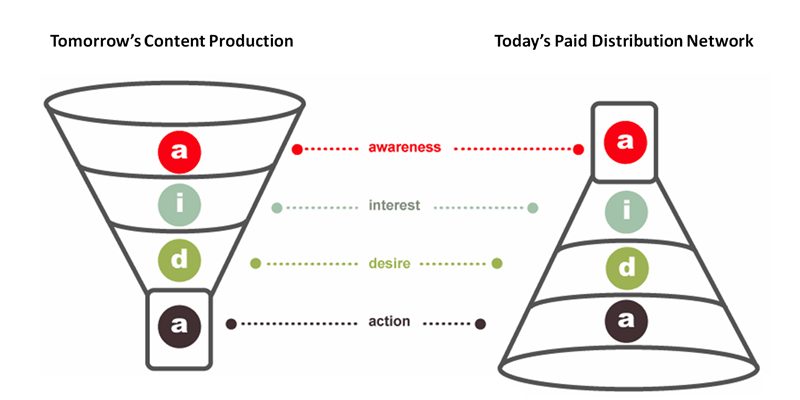
There hasn’t been as much pressure on the paid content distribution infrastructure to align to the buyer’s journey like content production has felt. The reason is simple – organic channels have picked up where paid distribution has fallen short for up-funnel content.
For many industries, the content visibility gap has been filled by inbound marketing.

This fact is responsible for the rise of inbound marketing late last decade.
Not too long ago marketers could “build it and they would come.”
In other words, publish, broadcast and pray. Organic channels like email, search, and social media could drive the lion’s share of engaging traffic. Many marketers didn’t have to engage paid channels for their up-funnel content because the aforementioned channels drove exceptional visibility.
Companies like Moz and HubSpot thrived in this environment.
Those brands figured out mid last decade that if you created good problem-solving content and filled the top-funnel content deficit in their industry, you would be rewarded with visibility from the content-starved and underserved – the top of the buyer’s journey, thus, feeding consumers’ ZMOT.
Content Shock
We have entered or are about to enter an age of “Content Shock.”
This phrase was popularized by Mark Schaefer and describes what he considers the economics of content marketing. The overall concept is simple – the amount of content being produced and published is growing by leaps and bounds.
In fact, he says that by 2020 they’ll be 500% more information on the Internet than there was in 2015.
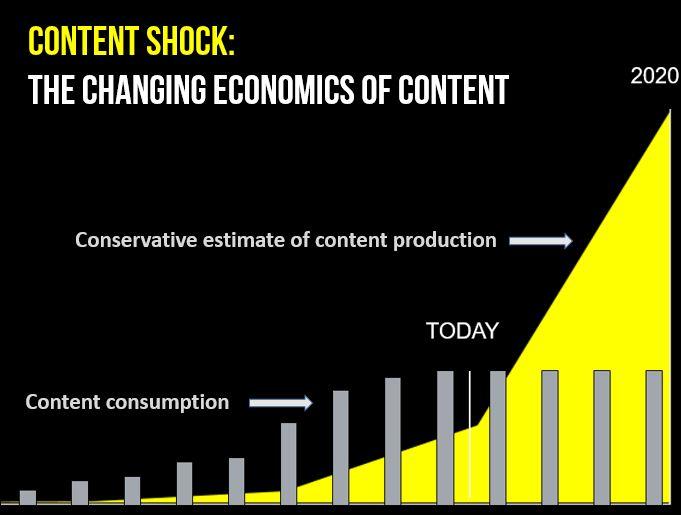
Image via: {grow} blog
This means that many industries are leaving or already have left content deficits at the top of the buyer’s journey and are now entering into an era of content surpluses. This makes adequate content visibility on organic channels using inbound marketing much more difficult to achieve.
Not only are there a finite number of people to consume this content, but there’s a lot more competition for their attention.
Unless Google and the other search engines radically change something, marketers mostly have only 10 positions on the first page to compete for organic visibility.
With the amount of content expected to grow so substantially, relying on the “build it and they will come” model of yesterday will be problematic for marketers.
For over a year now, social media networks have publically stated that their algorithms will limit the organic visibility of brand-produced content.
For Facebook, it’s down to less than 2% visibility and even less for certain industries. Facebook is not the only one, either. Twitter publically proclaimed its intent to do this a year and a half ago.
This is a proven monetization model that forces brands to pay for visibility. This reduced visibility is starting to play itself out in brands’ analytics, too.
In October, Buffer publically admitted that they lost nearly 50% of its social traffic over the last 12 months. According to BuzzSumo, social shares on content for Copyblogger, Social Media Examiner and Moz were all down by 50% in that same time period. That’s also with an increase in content production.
Conventional wisdom says social shares should be increasing. It’s also very safe to say that digital marketing as an industry is in a state of content surplus.
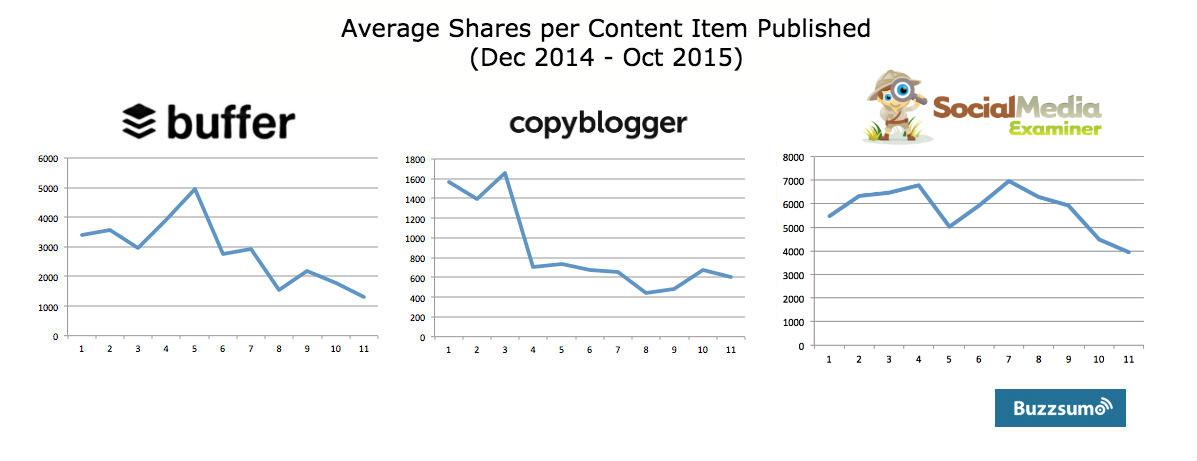
The Adoption Curve Matters
For some, this may sound like doom and gloom for inbound marketers out there.
The good news is that many of the innovators and early-adopters that started publishing for the buyer’s journey early in their industry have built a substantive enough audience and acquired considerable domain authority.
Marcus Sheridan describes these brands as being part of the “ Digital Land Rush.” He calls them “Digital Sooners” and they’re depicted as Innovators and Early Adopters below.
The Content Marketing Adoption Curve

For a complete breakdown of the Content Marketing Adoption Curve, download my latest book, The Content Promotion Manifesto, for free.
For those brands, broadcasting content via email and relying on the search engines to deliver profitable traffic will likely continue to drive acceptable revenue for some time to come, if not in perpetuity.
Unfortunately, that’s not realistic for most brands and new businesses today.
These brands were the Early Majority to Laggards in adoption and likely got on board late in their industry’s time of content deficit or during recent industry surpluses.
Many of the brands that fall in the highlighted area of the adoption curve above have seen or will be seeing diminishing visibility through organic channels and inbound marketing.
Because they weren’t a part of the digital land rush they likely won’t be able to drive the returns the others that came before them have by relying on inbound marketing alone.
The animation below highlights this diminishing visibility.
Diminishing Organic Visibility
 Many in the industry attribute this diminishing organic visibility to the ever-increasing volume of content being published online.
Many in the industry attribute this diminishing organic visibility to the ever-increasing volume of content being published online.
CMI’s most recent study shows that in 2016 only 30% of B2B marketers reported that their content marketing efforts are effective. That’s down from 36% the year prior.
Joe Pulizzi, Founder of CMI, points to the Gartner Five-Step Hype Cycle as being the culprit.
Perhaps he’s correct, but the sheer economics highlighted above and the fact many marketers’ analytics are pointing to diminishing visibility is hard to ignore. It’s more likely they both played some sort of role in the lack of confidence in content marketing in 2016.
We won’t know for sure for several more years to come.

Many content marketers are still disillusioned in thinking that owned media content promotion (broadcasting) that accidentally earns the occasional media mention or social share is the sole means of distribution for top-funnel content.
Most of the marketers who think this way and fall in the highlighted area of the adoption curve above will continue to struggle with their content’s perceived effectiveness.
The good news is that there are two other channels for top-funnel content promotion – purposeful earned media (media outreach and influencer marketing) and native advertising.
Both of which aren’t super-common promotion tactics across brands today.
Earned media is a powerful promotion tactic for a marketer’s top-funnel content, but it’s not easily scalable. On the other hand, many native advertising channels are easy to scale.
Native Advertising
As a channel, native has been given many different definitions, depending on who you ask.
However, for our purposes, we’ll define it as a paid distribution channel primarily built for top of the funnel content. These would include recommendation widgets, sponsored content and in-feed social. What binds all of these distribution tactics together is the word “in-feed.”
They all deliver top-funnel content within the normal reading stream of organic content. It looks like it’s supposed to be there.
It was estimated that native advertising revenue would hit $10.7 billion in the US by 2015.
That’s almost 18% of the total digital ad spend estimated for 2015. That means that most of the other 82% was spent on middle to bottom-funnel content distribution.
This further reflects the disequilibrium between content mapped to the buyer’s journey and its paid channels of distribution.
In equilibrium, the revenue would be flipped – 18% of spend going to PPC/display and 82% going to native.

However, the revenue model above is certainly trending in a way that demonstrates the pressure on paid distribution to align with the buyer’s journey.
As organic visibility from inbound marketing continues to wane, look for continued growth in year over year gains.
The downside to content shock is most certainly reduced organic visibility and audience attention. However, there is a silver lining to industry content surpluses.
Those Innovators and Early Adopters hold sway with many of the audiences everyone else wants to get in front of. These websites are the prospective publishers for native advertising and the Early Majority to Laggards are the prospective buyers.
The Content Marketing Adoption Curve

For a complete breakdown of the Content Marketing Adoption Curve, download my latest book, The Content Promotion Manifesto, for free.
Native advertising’s place in the macroeconomic landscape of digital content is clear.
The pressure for content to align with the buyer’s journey is being felt on the paid content distribution landscape. We’re still in the infancy of what native will eventually become.
However, if these trends continue, it could turn out to be the primary content promotion and distribution tactic of marketers everywhere.
It’s at this time when the buyer’s journey, content production and its paid channels of distribution will be in complete equilibrium and consumer’s ZMOT will be optimally satisfied by marketers.

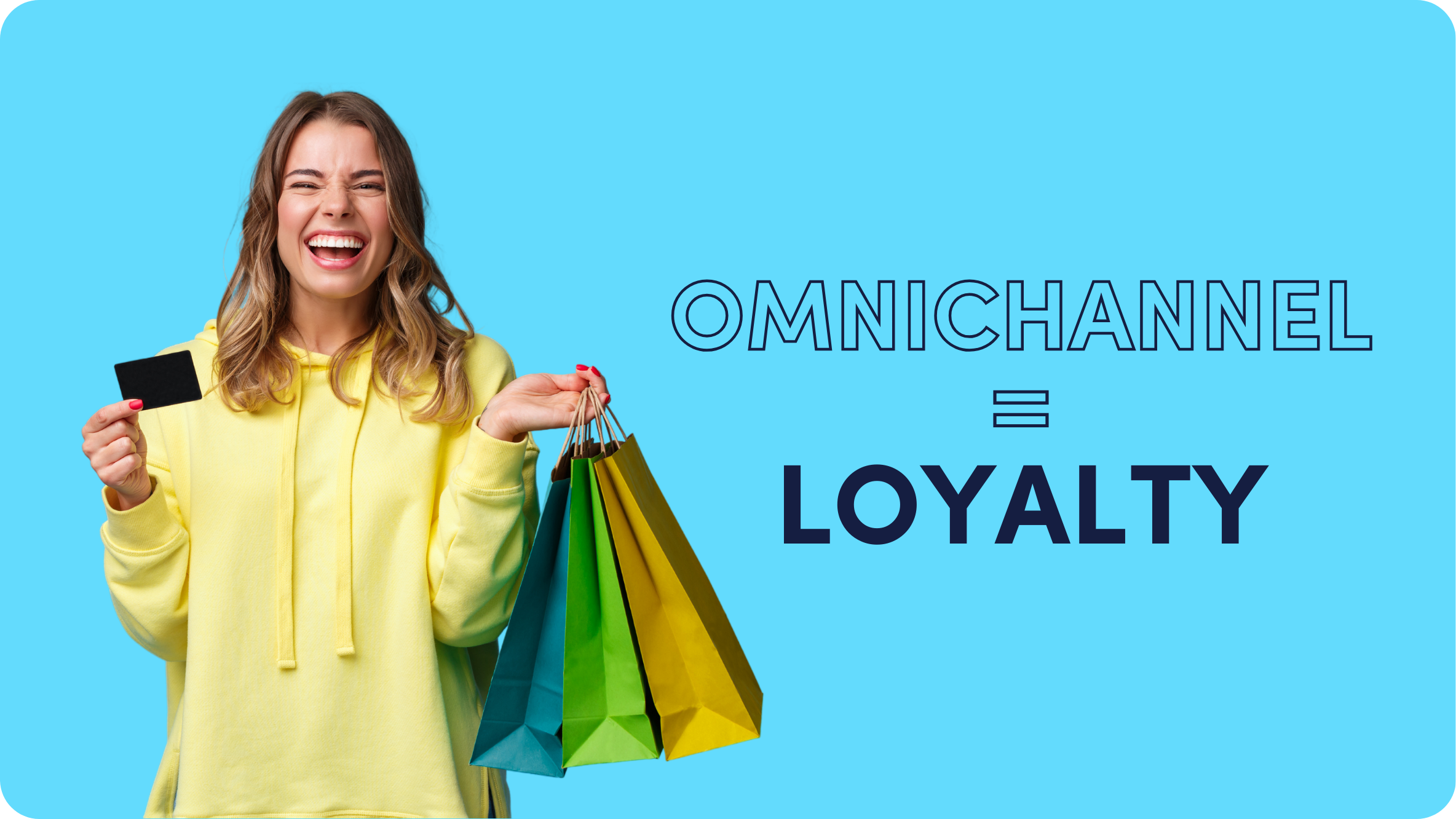




![[Infographic] Which Ad Headlines and Images Catch Your Readers’ Attention?](https://www.outbrain.com/blog/wp-content/uploads/2024/01/ad-headlines-and-images-best-practices.png)




